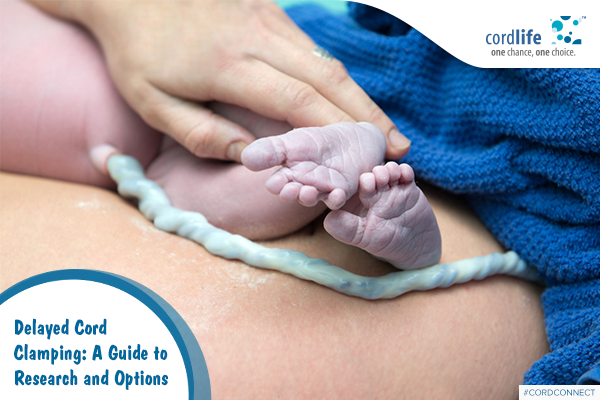To start with, let us first understand what is ‘delayed cord clamping’.
According to the International Childbirth Education Association, “Delayed cord clamping is a birth practice where the umbilical cord is not clamped or cut until after pulsations have ceased, or until after the placenta is delivered.”
Now you may ask why this procedure is necessary and how does it impact your baby. At the time of birth, your baby’s body contains two-thirds of the blood whilst the placenta contains about one-third of the blood. Studies have revealed that a delay in the clamping of the umbilical cord can provide newborns approximately 30% more of the foetal-placental blood volume. Thus, delaying the cord clamping will give your baby a healthy blood volume.
Let Us Look At Some More Benefits That Delayed Cord Clamping Can Offer:
- The extra blood that delayed cord clamping provides to your baby can prevent anemia. Since breast milk does not provide sufficient amounts of iron which is important not only for preventing anemia but also for your baby’s brain development, the blood received from delayed clamping can deliver the extra iron content needed by your baby’s body.
- Delayed cord clamping allows your baby to incorporate an increased amount of stem cells into their body as the production of stem cells is highest at the time of birth. Stem cells are a core part of the body’s anatomy. They have the potential to repair and cure any type of internal injuries or illnesses.
- Some studies have shown that the extra time taken to detach the umbilical cord can give your baby a neurodevelopmental boost in later life.
- As mentioned before, delayed cord clamping increases the baby’s blood volume which in turn promotes a healthy neonatal cardiopulmonary transition.
- In the cases of babies who are born prematurely, delayed cord clamping can allow them to have stabilized blood pressure in the days succeeding the birth.
Although delayed cord clamping has several benefits, the ideal time for cord clamping is a topic of much debate. According to the American College of Obstetricians and Gynaecologists “Several systematic reviews have suggested that clamping the umbilical cord in all births should be delayed for at least 30–60 seconds, with the infant maintained at or below the level of the placenta because of the associated neonatal benefits, including increased blood volume, reduced need for blood transfusion, decreased incidence of intracranial hemorrhage in preterm infants, and lower frequency of iron deficiency anemia in term infants. Evidence exists to support delayed umbilical cord clamping in preterm infants, when feasible. The single most important clinical benefit for preterm infants is the possibility for a nearly 50% reduction in intraventricular hemorrhage. However, currently, the evidence is insufficient to confirm or refute the potential for benefits from delayed umbilical cord clamping in term infants, especially in settings with rich resources.”
Delayed cord clamping is a common practice amongst most doctors and has no effect on the process of cord blood collection since the cord blood is collected only after the cord has completely stopped pulsating. So if you are an expecting parent and have opted for cord blood banking, you can speak to Cordlife expert today!
